November 26, 2025 | 17:36 GMT +7
November 26, 2025 | 17:36 GMT +7
Hotline: 0913.378.918
November 26, 2025 | 17:36 GMT +7
Hotline: 0913.378.918
The model would be an effective approach for reducing input production costs in the face of input material price increases.
According to Mr. Nguyen Tam, director of the Binh Thuan Agricultural Extension Center, rice is one of the province's main crops, with an annual cultivated area of over 100,000 hectares and an average yield of 5.5 to 5.8 tons per ha.
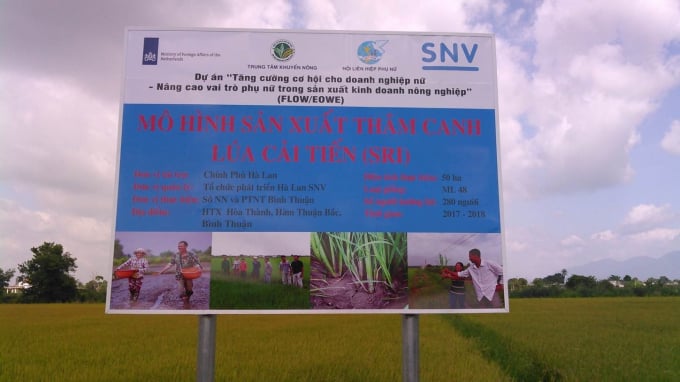
The model of rice production by the SRI method will help farmers reduce input costs such as seeds, fertilizers. Photo: Dinh Thung.
Due to the effects of climate change over the last several years, weather events have shifted abnormally, resulting in producing crops that are frequently deviated from or later than those of the same period the previous year. Frequently, storms and rain hampered production.
While cultivation practices of several localities in the province are backward, farmers used to sow seeds at a packed density of 25-30kg per rod and abused pesticides and fertilizers, leading to poor rice plants. As a result, farmers are forced to raise harvest costs, while rice crop output continues to decline. Rice production has not been economically efficient for farmers due to increased raw material costs.
"This is especially true in light of the escalating costs of seeds and materials, particularly chemical fertilizer. As a result, conventional farming methods have lost their economic effectiveness for farmers," Mr. Tam said, adding that one way to cut production inputs is to use the advanced rice production model SRI.
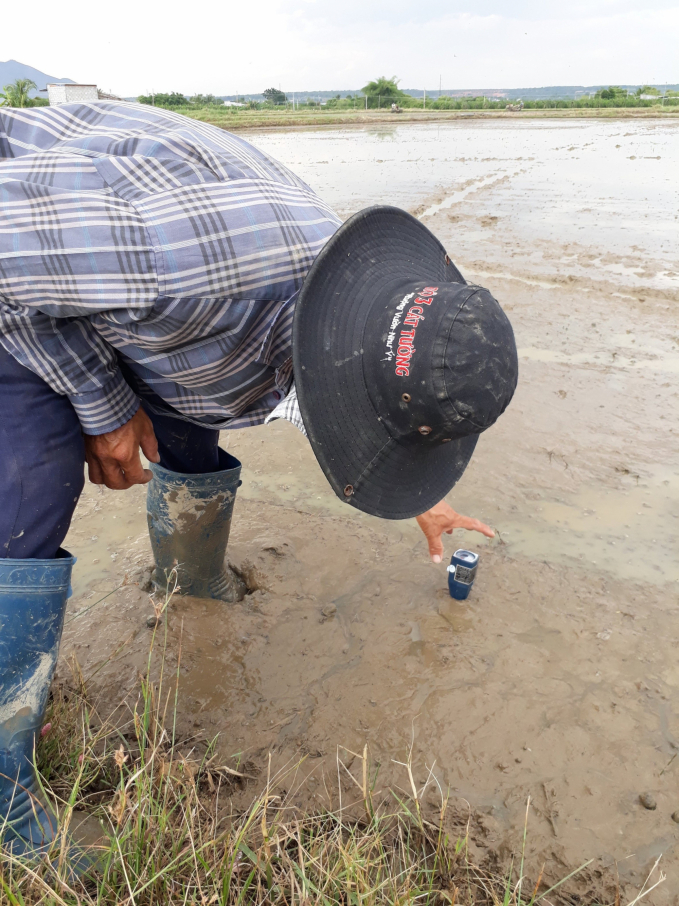
Binh Thuan farmers reduce the number of sowing seeds to only 12 kg per rod according to SRI method. Photo: Dinh Thung.
According to the Director of the Binh Thuan Agricultural Extension Center, the Binh Thuan agricultural sector and the provincial Agricultural Extension Center modeled SRI improved rice production and transferred techniques to cooperatives in important rice-growing areas in Tuy Phong and Tanh Linh districts during the 2016-2017 winter-spring crop through the SNV Netherlands Development Organization's project.
The center conducts experiments to determine the optimal seeding rate and establishes a fair seeding rate of 8-12 kg/rod for verified varieties such as ML48, Dai Thom 8,...
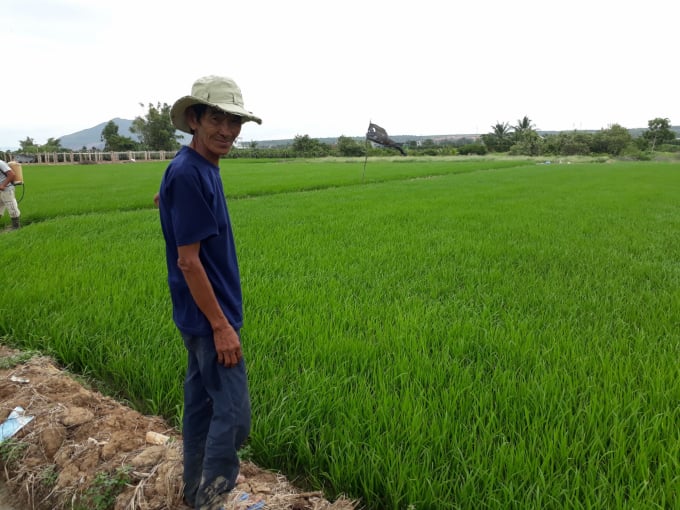
Many farmers in Binh Thuan are very interested in the SRI model of rice production. Photo: Dinh Thung.
Which, the SRI production model with a seed density of 12kg/rod has resulted in numerous positive outcomes for rice farmers, including an increase in productivity of 5 – 15%, an increase in the economic efficiency of 5 – 20%, and a reduction in the amount of water used for irrigation during the dry season by 25 – 35% when compared to sowing production with a seed density of 20 – 30 kg/rod.
Farmers of Duc Binh Agricultural Service Cooperative in Duc Binh Commune, Tanh Linh District, are enthusiastic about the SRI advanced rice production model. Additionally, they integrate organic and conventional rice cultivation to enhance rice quality and maintain food safety during delivery to customers.
According to Mr. Nguyen Anh Duc, Director of Duc Binh Agricultural Service Cooperative, the cooperative as a whole has nine members and a 20-hectare production area. Historically, cooperative members, like farmers in Binh Thuan, used to sow seeds at a density of 20 to 30 kg per rod.
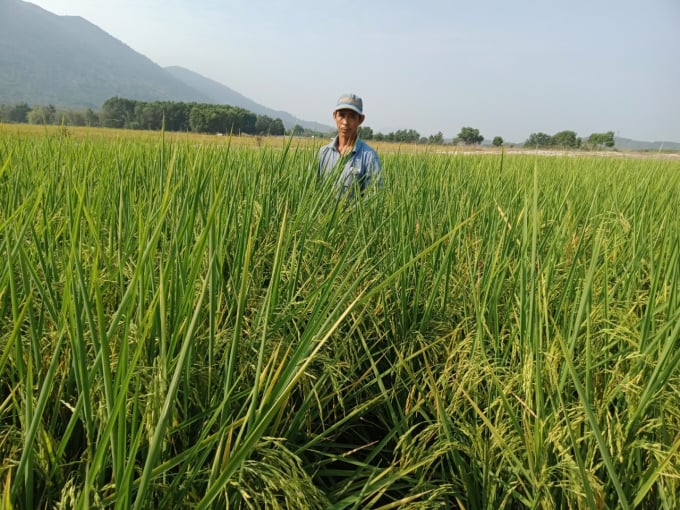
In the rice production area of Duc Binh Agriculture and Service Cooperative, farmers are familiar with SRI production. Photo: Dinh Thung.
Farmers are forced to apply a lot of fertilizer as a result of the dense seeding, which results in the growth of several pests and illnesses on rice. Farmers spend an increased amount of money on pesticides. Since then, input costs have soared, and the crop has become unprofitable.
However, beginning with the 2018-2019 winter-spring crop and continuing through the 2019-2020 winter-spring crop, cooperative members have access to the SRI advanced rice production model being implemented by the Provincial Agricultural Extension Center. Since then, it has aided in the transformation of people's production techniques away from dense sowing and away from the premise of 'the more trees planted, the more fruits collected.'
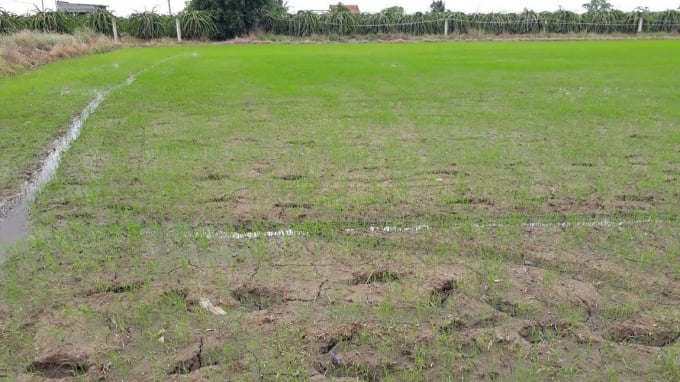
Farmers gradually get rid of the concept of 'the more trees planted, the more fruits collected.' Photo: Dinh Thung.
"At the moment, members of the cooperative grow rice with a seeding rate of just 12 kg per rod. Due to the elimination of seeds, fertilizer use is also decreased; rice plants grow and develop normally, with few pests and illnesses," Mr. Duc stated, adding that rice production according to SRI should enhance farmers' income by 15-20 percent when compared to conventional production.
Mr. Nguyen Anh Duc, Director of Duc Binh Agricultural Service Cooperative, stated that the cooperative produces rice types such as ST25 and OM18 with an average output of 7-9 tons per hectare each crop and produces two harvests every year. The cooperative's rice has now gained 3-star OCOP certification as a result of organic production. The cooperative supplies rice not only locally but also internationally; income is about VND 3 billion each year, and after expenditures are deducted, the cooperative earns hundreds of millions of dong in profit.
According to the Binh Thuan Agricultural Extension Center, the province has produced 1,100ha of rice using the SRI technology so far. The Center will continue to develop models in important rice-growing districts of the province in the future years, with the goal of creating a concentrated, high-quality commercial rice-producing area. Since then, contributed to the development of a value chain for high-quality rice and branded specialty rice in Duc Linh, Tanh Linh, Ham Thuan Bac, and Bac Binh districts.
In 2022, the Center will establish a model of intensive rice production using the SRI method, which is certified VietGAP and provides chain-link traceability, on size of around 20ha in the rice area of Tanh Linh district.
Translated by Linh Linh

(VAN) The model of making a living under the forest canopy through the agroforestry system in Van Son commune, Bac Ninh province, is expected to generate an annual income of approximately VND 30 million/ha.

(VAN) Many enterprises in Can Tho are harnessing natural energy and reducing greenhouse gas emissions in their production processes, thereby contributing to the promotion of a sustainable green transition.
/2025/11/24/3536-2-112800_176.jpg)
(VAN) Dong Nai now has tens of thousands of hectares of forests certified for sustainable management, and this area will continue to be expanded in the coming period.

(VAN) Vinh Ha hamlet (Dai Xuyen commune, Hanoi) is shifting away from small-scale farming as households adopt bioscurity into their breeder chicken models.

(VAN) Heavy rains make aquatic species more vulnerable to disease. Proactive water management and high-tech systems help farmers prevent outbreaks and protect yields.

(VAN) Greenhouses are shifting production mindsets in Binh Lu commune, enabling farmers to ‘weather the sun and rain’ and secure stable vegetable harvests throughout the year.

(VAN) Green transition is crucial for the Mekong Delta amid climate change and stricter standards, offering a path toward sustainability.